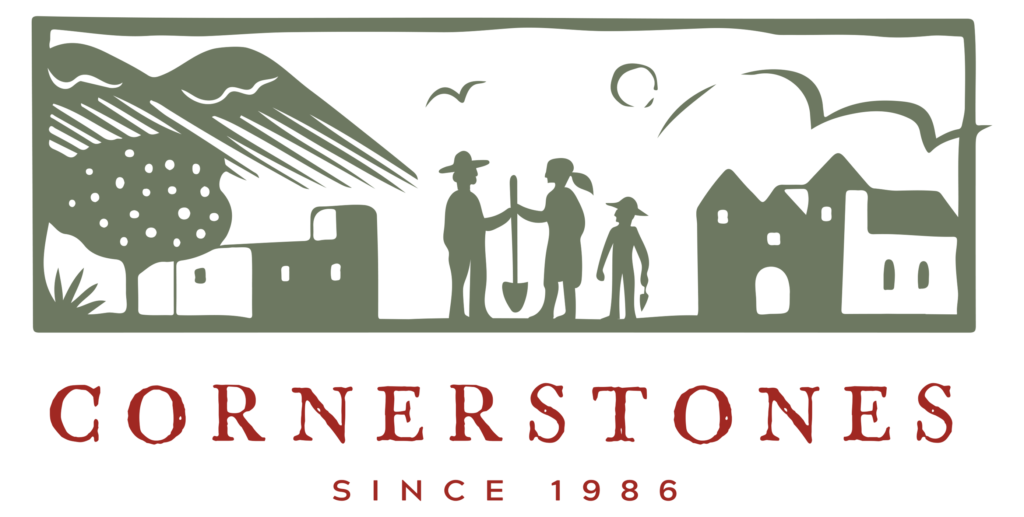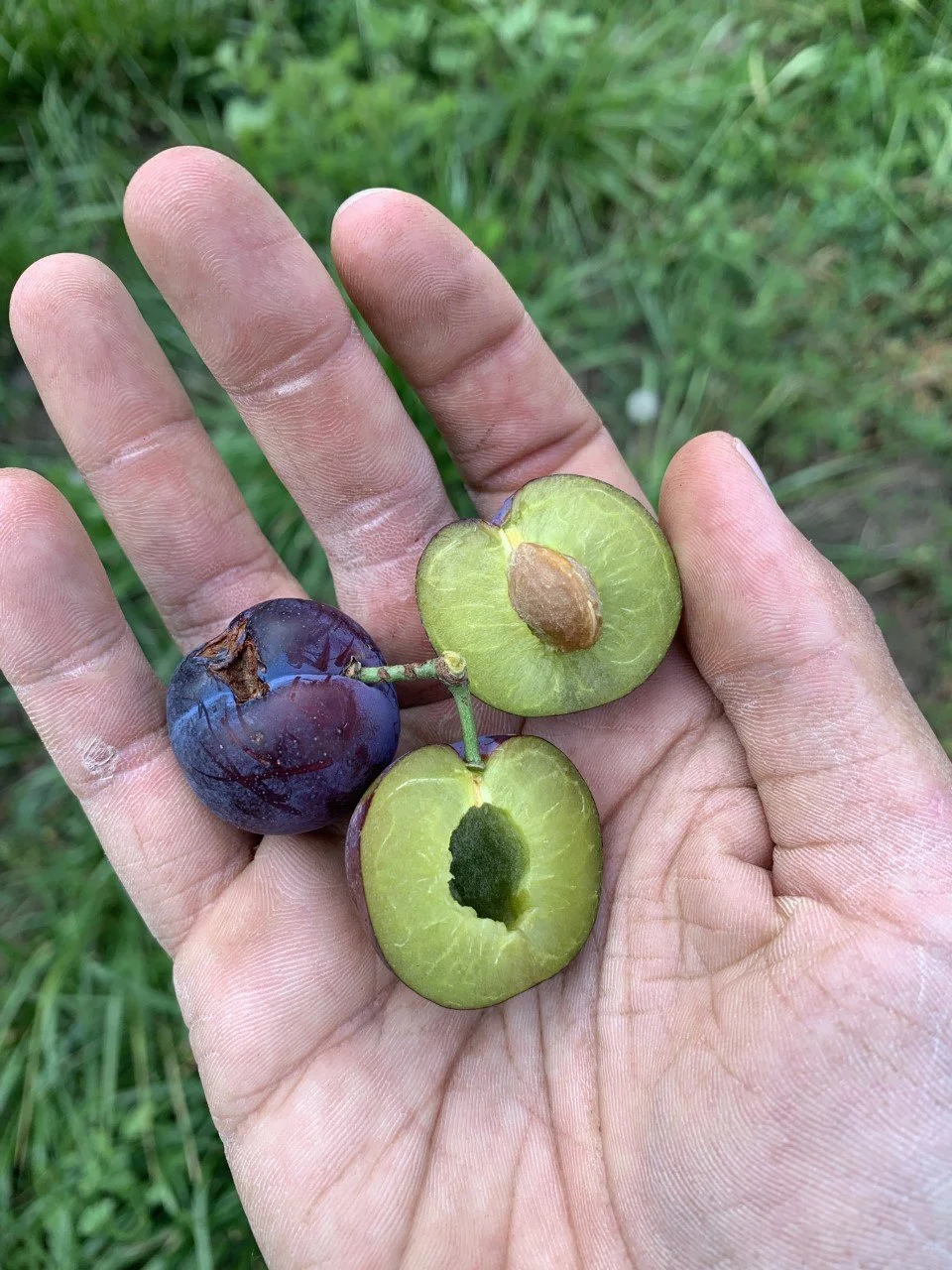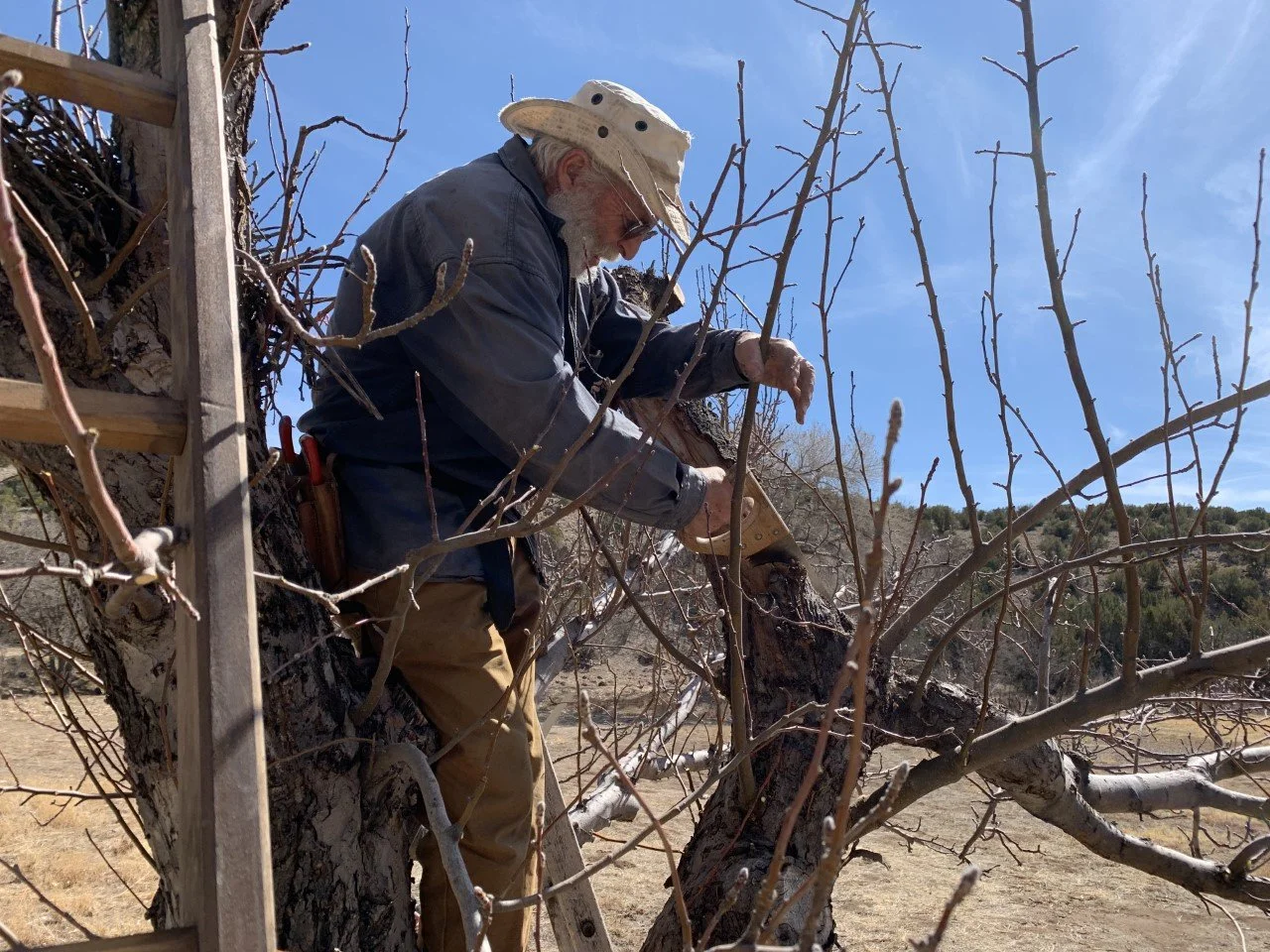Having worked at Cornerstones for 12 months, going to Rael Ranch felt like a long overdue trip. Just outside La Cienega, a Village downstream from Santa Fe, the historic home of the local Rael family has been a focus of preservation and documentation work of my colleagues for years. I had no excuse but the culture of busy-ness for having never visited. But on a temperate day after a spring snowfall, I joined our Assistant Program Director, Issac Logsdon, and four volunteers, for a day spent with hands not tapping keys but shifting stones, rolling rocks, and digging earth. The rewards were greater than I’d imagined.
My assignment, as Communications Manager, was to take a different angle on a place Cornerstones has helped maintain for years. I wanted to look downstream from the acequia our staff and volunteers care for, to where that flowing ditch leads. One and a quarter miles long, the ditch has been upkept for lifetimes, and Cornerstones now leads stonemasonry to sustain it for the next century. The acequia itself is impressive for its ongoingness, hard to capture in language or photographs, but obvious walking its length for the first time.
Today what the ditch keeps alive is fruit trees. “A number of mulberry, apricot, and 10 apple, a plum thicket, a quince tree, and several pear,” Issac rattled off, surveying the field. Every one of them is fed at their roots by the acequia that runs around three corners of the field. Also, a single, younger and taller tree that I could see wasn’t a fruit tree, which Issac knew was an elm, invasive. The older fruiting trees buffer a field once filled with subsistence crops. In the last handful of decades, crops were abandoned for growing alfalfa for cattle. But that is recent in the life of this place. What a trained eye could see, and a piqued visitor only grasp at, was not a slice of life but a way of life. There was once a vineyard upstream, and that was the wine the Raels drank, summers and winters, living off the ditch I’d raked leaves out of centuries and decades later.
Photos by Issac Logsdon
A sign on the way into the Ranch proudly announces its Ditch, dated 1718. The family, throughout generations, continuously farmed, up until the death of Alonso Rael in 2004. A stately, simple adobe house stands where a few generations of the family lived, probably from the 1890s forward. The economic model in place was one of bartering with surplus, not a division of melon and corn growing labor. The grandeur and expanse of today’s Santa Fe vanished behind hills between there and the time I was learning to see.
Time, as a concept, flickered in my mind throughout the day, as embodied time deepened and slowed for me the longer I worked around the acequia. Uncounted minutes flowed by in my finding rocks for gravel to lay acequia stones: not too big, not too small, not too much of any one size, just so. The practice of earthen building, as I had felt before while making bricks or watching plastering, is not just the materials or historicity or places, but also the physicality that goes into it. The rocks had maybe been where I’d picked them from since well before I was born, their new tamped place under stone their home for a duration longer than life. I was more somewhere than I ever am while online. And through my smallest of physical contributions, I was building something that would outlast any organization or ideas I have of work or career.
The trees I was learning about, and the sweetening place they played in the lives of the Rael, today ripen under the knowing guidance of arborist Gordon Tooley. His fresh crop of apprentices come here first each year, learning to first prune trees old enough that they need greater care and respect. Diseased branches need to go sooner, as do crossing ones. Opening up trees can improve air circulation, which lowers disease pressure while letting more leaves reach sunlight. But too much exposure can lead to sun scalding of the bark. Pruning young trees is about shaping for growth and structure; elder ones need accommodation for the ways they’ve become. Perhaps these were given truths in an older New Mexico; common sense today that needs pointing out.
While I was learning to see a place through its life in other times, Issac found himself thinking in more elemental terms. Interesting how the landscape and water interact, and the understanding of slope, direction of the sun, how the season changes that all go into making the best use of an acequia. What trees—the apples—are low on the slope, and why that makes all too much sense, in the almost eternal span of physics and biology. Although historic properties are often seen retrospectively, in our last moments there, I got a taste for another variety of time: what’s potential. There’s so much that could be done with a place like this, Issac can see, and that too adds to its importance. So much to be learned, practically and humanly, from the wider understandings that went into places sometimes seen as merely old-timey, or important for being “historic.” If I had already known that, the ancient dirt in my fingernails, the hunger of the long day’s work, and my reluctance to leave made it more intimate to me.



